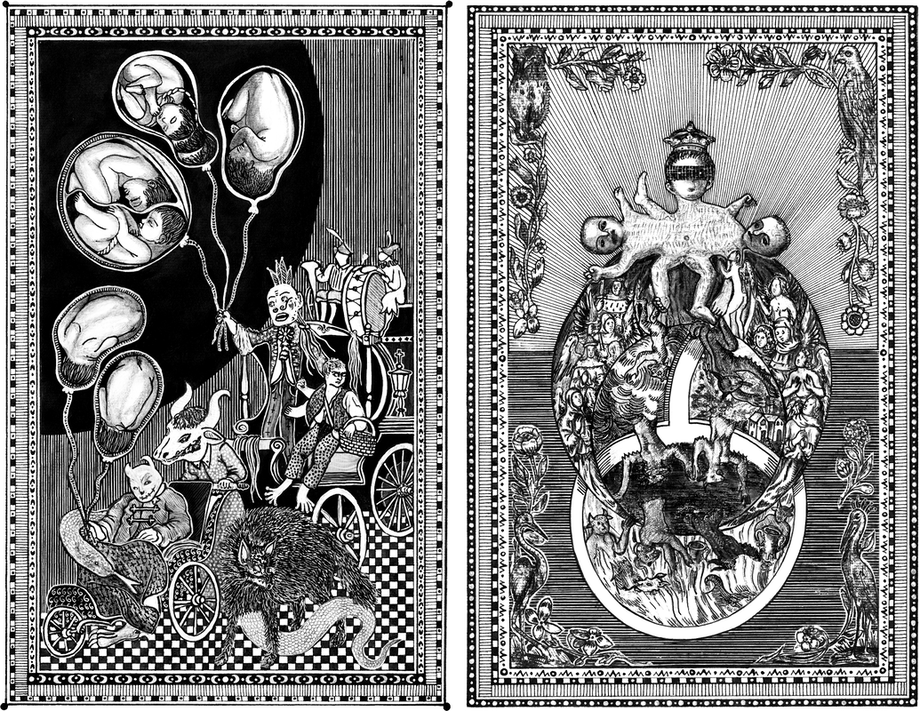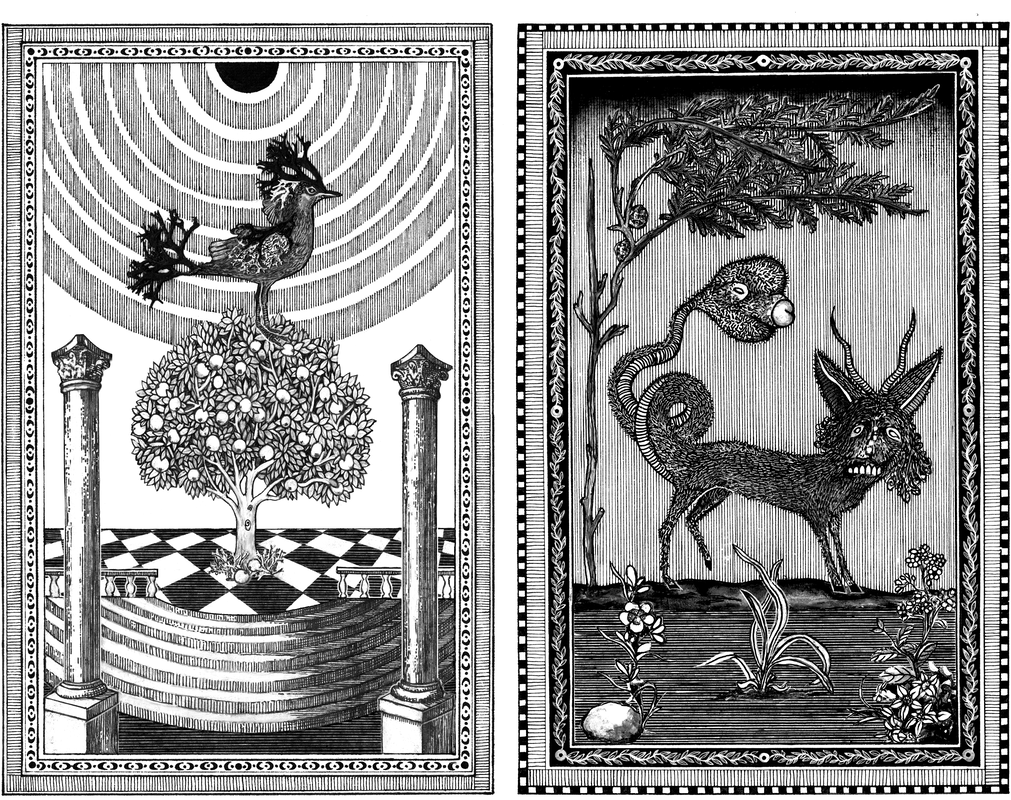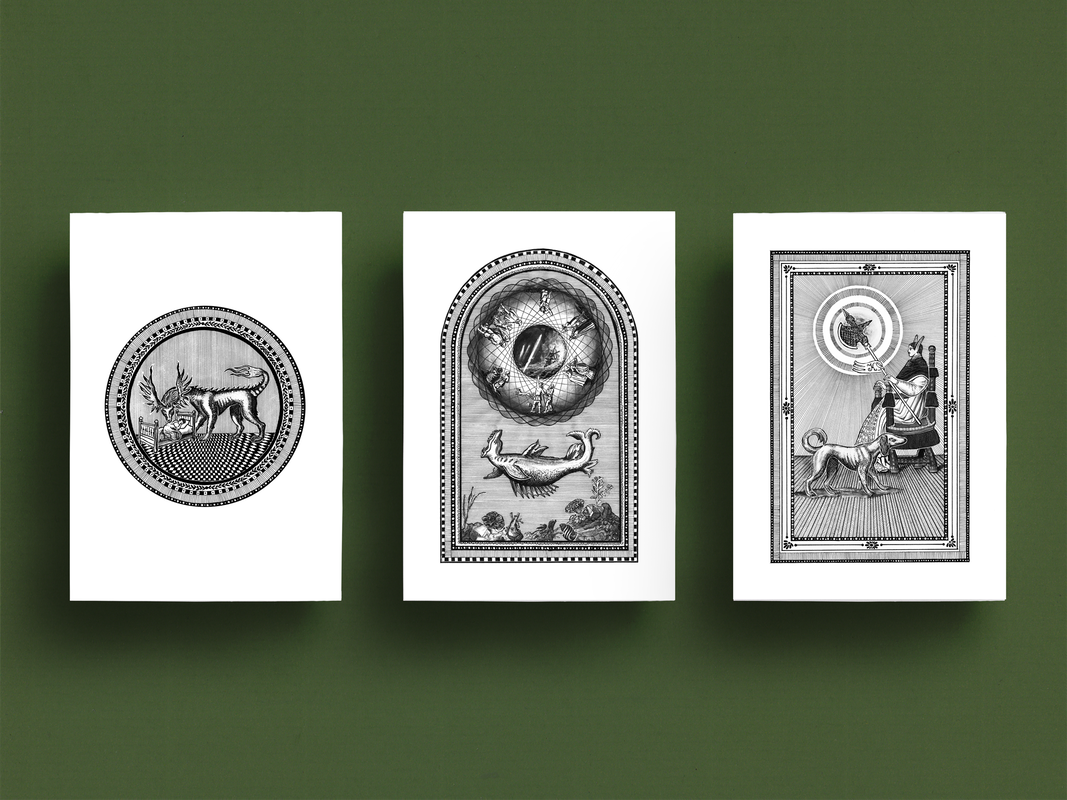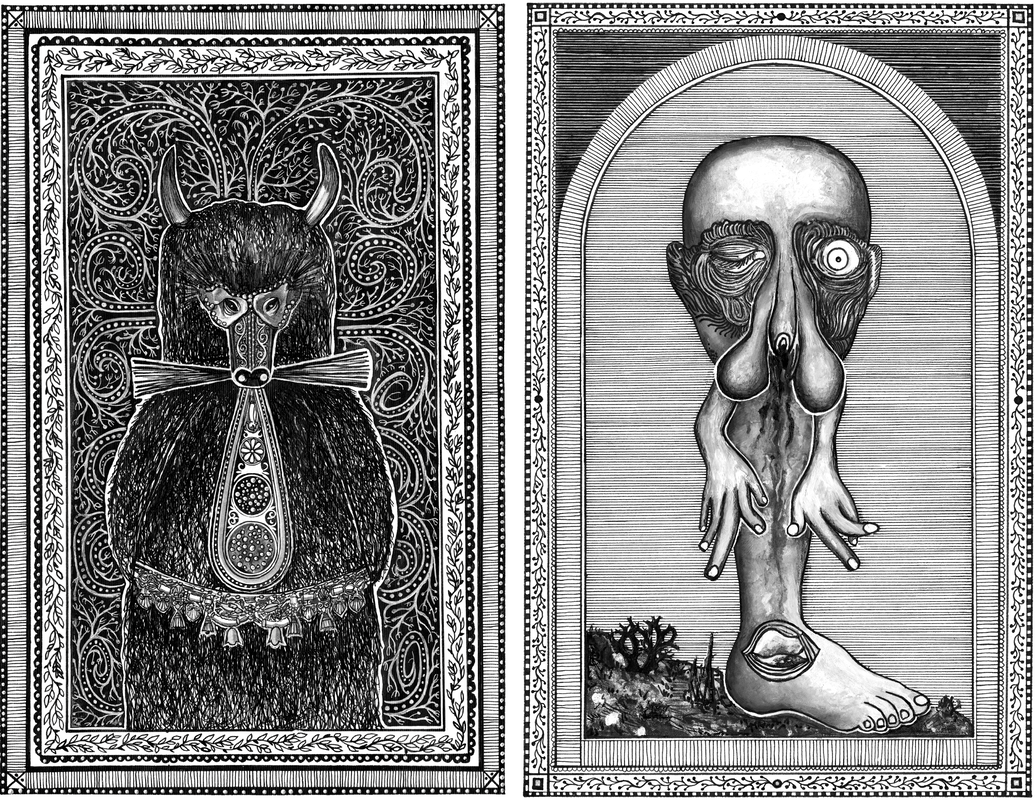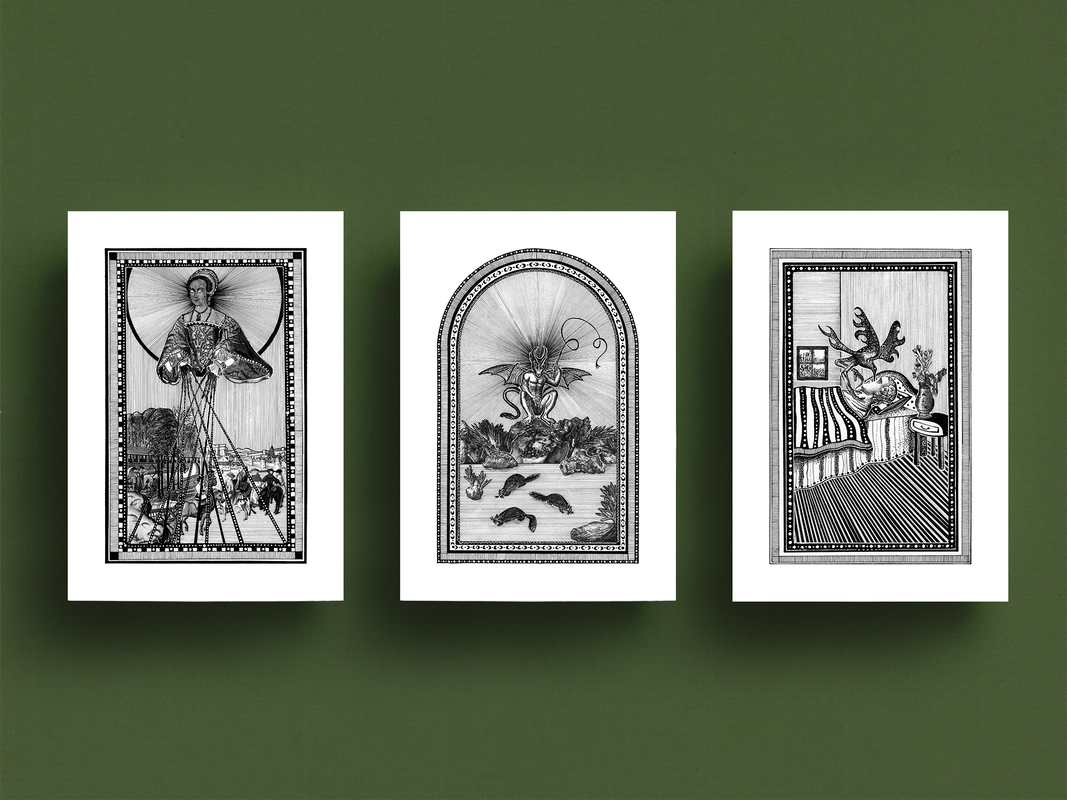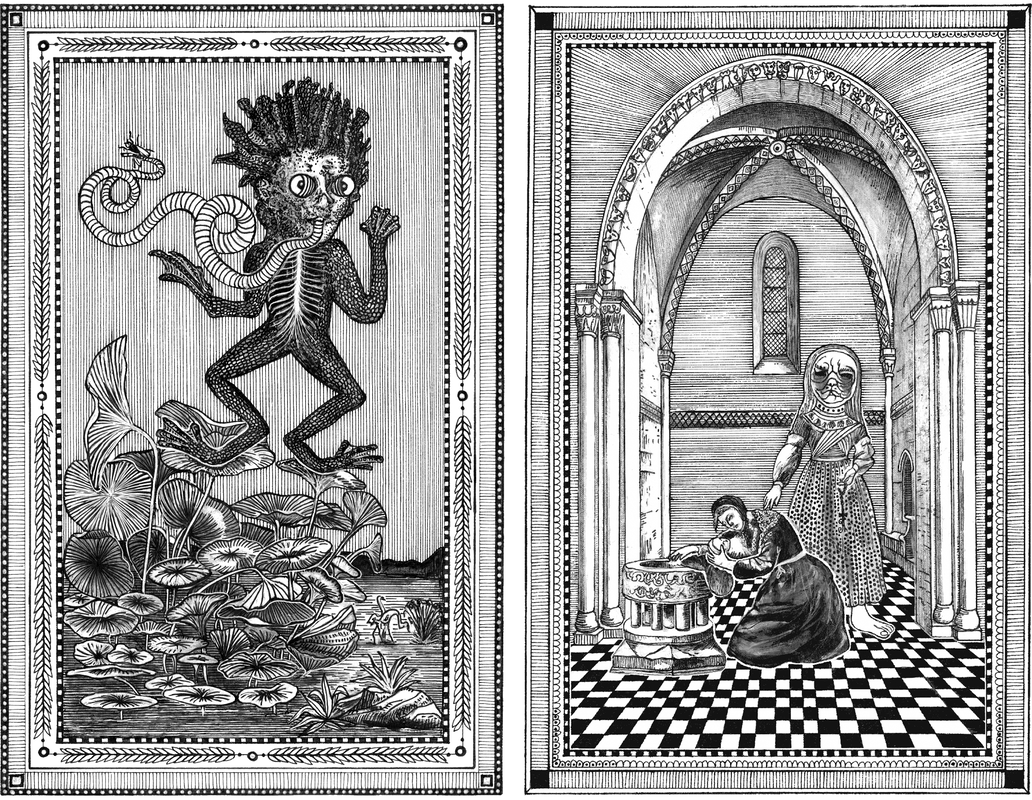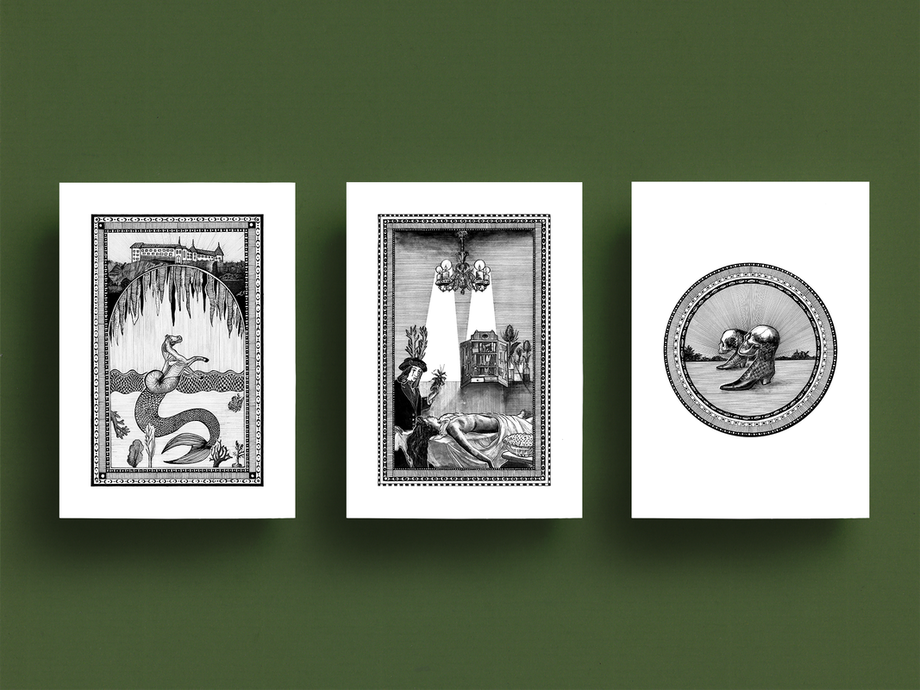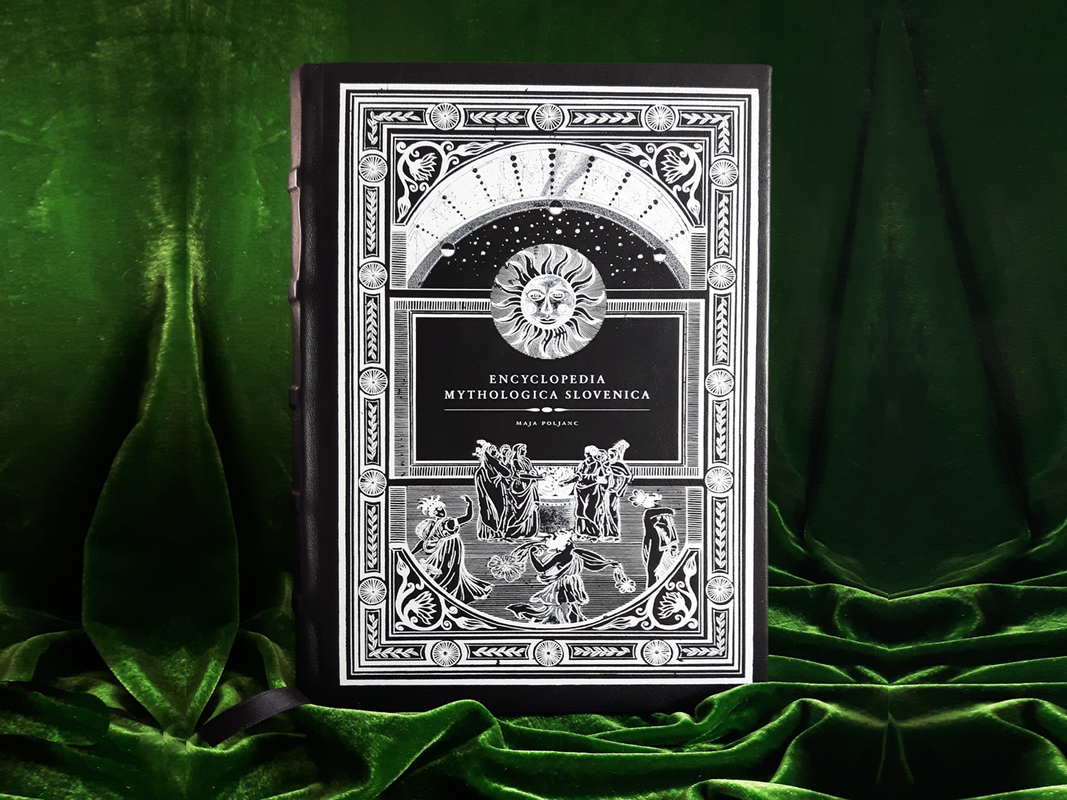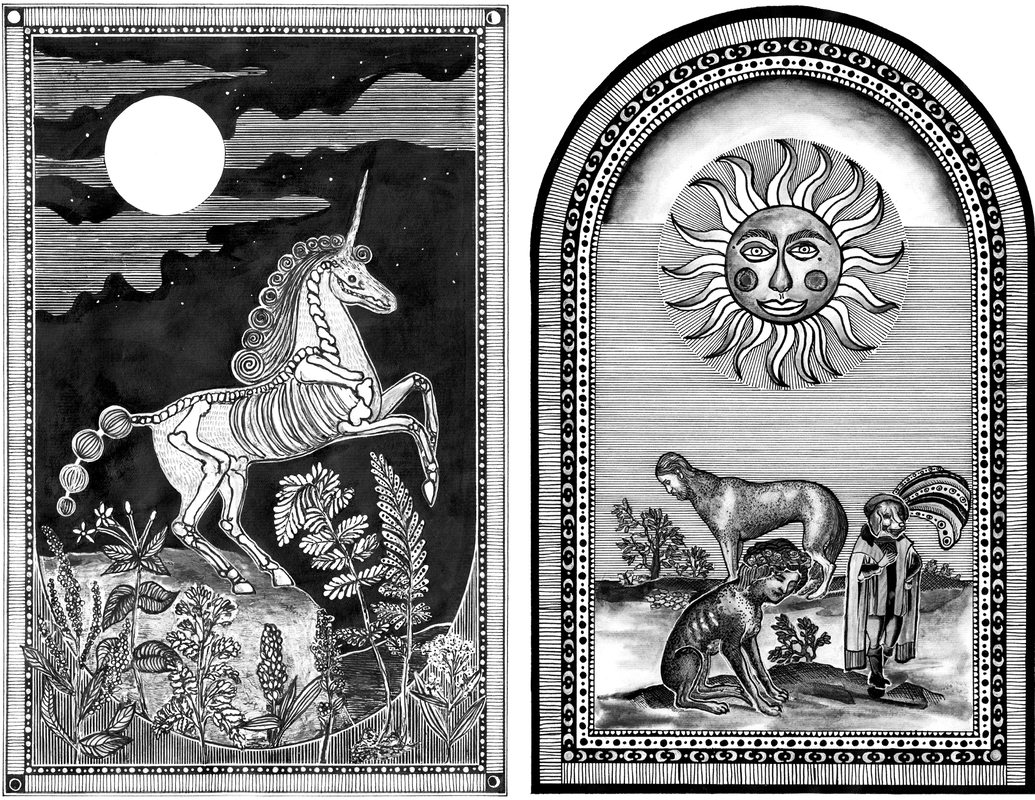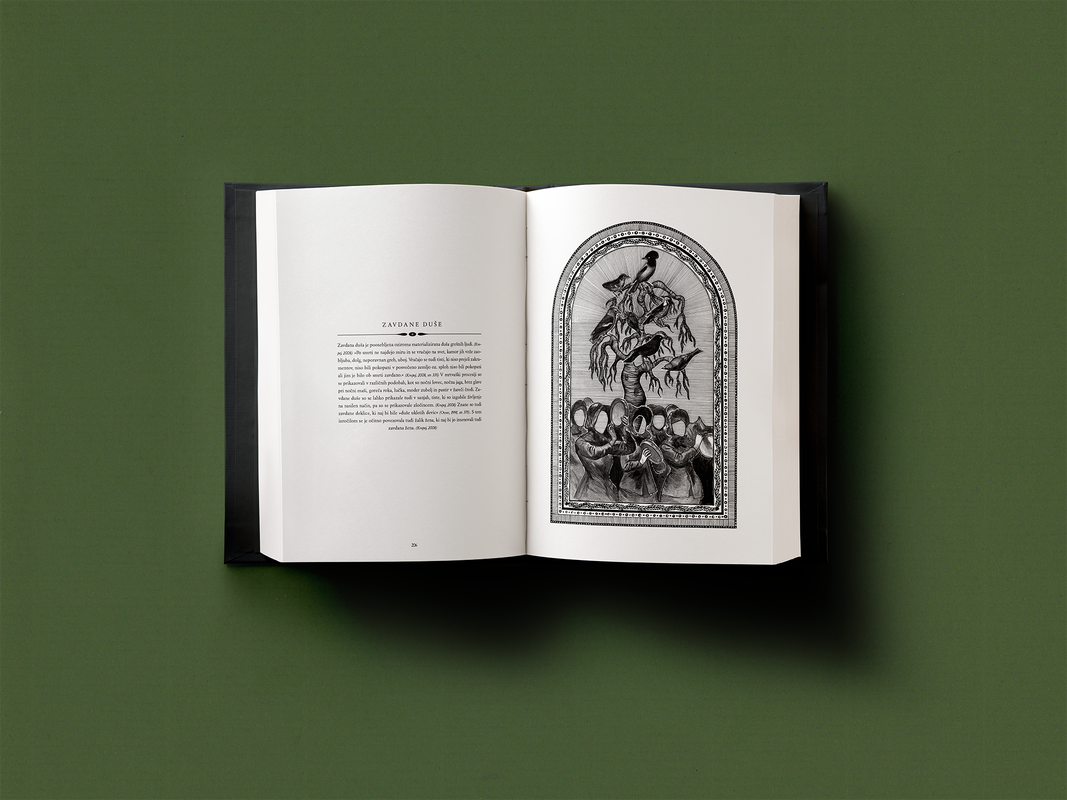Nočna jaga / The Devil’s Hunt - A nightly rush of demons, of dead souls believed to rage during the Advent and during Ember Week; during eight days, before and after New Year’s, when demons take possession and people are required to thank them for the bounties of nature. The wild hunt tears apart anybody it overtakes, and people can escape only by throwing themselves in the right wheel rut on a road, or by stepping aside and remaining motionless. The Hunt may also throw an axe into a passerby, pulling it out in the same location a year later, thus delivering the sufferer from pain and feebleness. This folklore is based on the belief in the souls of the dead who were led either by the wild hunter or by Pehtra Baba, a female mythical being. (Lit.: Kropej, M., Slovenian Supernatural Beings, 2012.) Triglav, Troglav, Triglaus, Trigelawus, Trajan. Trojan - An ancient Slavic, and particularly Baltic, three-headed deity believed to govern the earth, the sky, and the underworld. The people believed that he had a bandage over his face because he did not want to see their sins. According to sources, its cult was practiced in Szczecin, where the middle, and the largest, of the three hills that blocked access to the town was dedicated to it. Traditional Serbian songs mention Triglav as an old deity and as the god of war. After the death of the Roman Emperor Trajan in 117 A.D., the similarity of names Triglav and Trajan resulted in the transfer of this tradition that eventually amalgamated into the name Trojan. (Lit.: Kropej, M., Slovenian Supernatural Beings, 2012.)
Rajska ptica / The Bird of Paradise - A golden colour is used to denote the bird of paradise or the Golden Bird, which can either sing beautifully or its feathers have magical power. Listening to the bird of the paradise in the other world makes the time fly by. This motif is widely spread in folk narrative ATU 471 A “The Priest and the Bird” and also in folk songs “The Monk and the Bird of Paradise” . The tale about the magic singing of the golden bird was published by Ivan Tomšič, who heard about it in Tržič in Gorenjska. The content of the story is the same to the folk song about the bird of Paradise and the monk. Bérbara - A malevolent supernatural being with which adults in Dolenja Vas by Ribnica in Dolenjska frightened misbehaving children as late as the beginning of the 20th century: “Behave, or Berbara shall take you with her!”. (Lit.: Kropej, M., Slovenian Supernatural Beings, 2012.)
Baukl, Bauc / Boogeyman - An evil being with whom adults in Dolenjska frighten children. Faronika - a mythical animal, a fish swimming in water. When it moves the earth shakes to produce floods, geographical disasters, the end of the world. Kresnik, Vesnik, Šenjtanževec, etc. which can be 1) A solar deity; 2) a person with supernatural abilities and pes Vedež / dog "Know-It-All" with four eyes.
Kurent, St. Kurent, St. Pust / Carnival - A mythical fertility and lunar being and, according to Bezlaj, a deity of totemistic cults denoting the one who creates and devises. Krvavo stegno / The Bloody Thigh - People used to scared the children so they would stay home at night. It is not surprising that this creature appears in Slovenia near the villages or pastures where young shepherds grazed cattle. (Lit.:Čok, 2012, 48.)
Kuga / Plague - Personified notorious disease; Hudič, ki polhe pase / Dormice Shepherd and Škopnik, zmin - A supernatural being that appears in different forms, I have chosen the one that smothers children in their sleep and excludes their eyes. Škopnik was also believed to be represented by the so-called St. Elmo’s fire (Eražmov ogenj), sparks that can be observed during thunderstorms.
Brbúč - A supernatural being with which adults in Dolenjska frightened children away from reservoirs, wells, and brooks to prevent them from drowning. In Uršna Sela and in Laze by Novo Mesto people used to say that springs and wells are the abode of the brbuč who can pull disobedient children into water. (Lit.: A. Hudoklin, O frlinkah in Brbučih z Radohe (On the Water Caves and the Brbuči of Radoha). Bilten Jamarskega kluba Novo mesto 1991, 19–20.)
Krivda / Guilt - A personified trouble from the surroundings of Bovec in the western Alps. It walks behind the godfathers who have not given right answers at the baptism of a child. (Lit: M.Kropej; Od Ajda do zlatoroga, 2012.)
Krivda / Guilt - A personified trouble from the surroundings of Bovec in the western Alps. It walks behind the godfathers who have not given right answers at the baptism of a child. (Lit: M.Kropej; Od Ajda do zlatoroga, 2012.)
Morski konj / Sea horse - People living in the vicinity of Turjak in Dolenjska believed that under the church of St. Ahac was a void filled with water. It was allegedly inhabited by sea horses. Belin / Belinus was incorporated in Slovenian folklore predominantly in the Gorizia and Tolmin regions, where he was venerated as a powerful healer whose key could cure blindness. Zlati škorenjci, škornjce / Golden Boots - A spooky apparition. According to the people of Bohinj, phantom boots roam around by themselves, frightening people much like the bloody leg. (Lit.: M. Cvetek, Naš voča so včas zapodval (Our Father Used to Tell Us Stories), Ljubljana (Glasovi Book Collection) 1993.)
Book Cover of Encyclopedia Mythologica Slovenica / Photo: Petra Švajger
An example of a spread inside the book /
Sojenice, rojnica, rajnice, sojenice, jesenice / The Fates - The future of a baby lying in a cradle was predicted by three slim, beautiful women.
Sojenice, rojnica, rajnice, sojenice, jesenice / The Fates - The future of a baby lying in a cradle was predicted by three slim, beautiful women.
Enorožec Enorog / The Unicorn - The unicorn is a mythical animal with first a bull-like and later a horse- or goat-like body, which acquired its name from the long straight horn emerging from its forehead. The first representations of a bull with one horn originate from three thousand years BC on the seal of the ancient towns of the Indus, Mohenjo-daro and Harappa, where it represents one of the dominant revered icons. Hildegard of Bingen’s “Physica” did much to spread this myth and the belief in the healing power of the unicorn in the 12th century. The symbol of a unicorn was also a key element in heraldry, and was used on dynastic as well as on state coats-of-arms. In Slovenian tradition, it is mentioned only in folk songs and in some sermons but not in folktales. The unicorn is frequently mentioned in European medieval mystical texts and depicted in medieval fine art. The motif of “The Maiden and the Unicorn” (Hortus Conclusius) was also depicted on frescoes, in miniatures and in ornate initials of medieval manuscripts. (Lit.: Kropej, M., Slovenian Supernatural Beings, 2012.) Pasjeglavec, pesjan, pesajnar / The Cynocephalus or Doghead - 1) A human with a canine head. His eyes are either turned toward the floor or one eye is in the front of his head and the other on the back. He can also have but one leg and a single eye in the middle of his forehead; 2) A creature with the upper body of a human and the lower of a dog. 3) A demonic creature with a canine head, human torso, and in some cases also goat’s feet. In some places, the lore about the cynocephalus has been blended with the lore on Attila the Hun and Pes Marko (Marko the Dog), thus preserving the memory of the Huns, Calvinists, Turks, etc. It is also linked with the mythic tradition about the people called Gog and Magog, in apocryphal writings about the end of the world, and about the Cyclopes. Dogheads were believed to kill and eat people. There are numerous tales about escaped captives fleeing from their capturers, for example the tale about a girl who beheads her pursuers in her father’s cabin, ATU 956 (The Hot Chamber in the House of Robbers), like in the novel Mlinarjeva Jerica (Miller’s Jerica) by Jurčič. Reports of dog-headed people can be traced to ancient writings. Representations of dog-heads from Ancient Egypt and Mesopotamia have been preserved, and St. Christopher was depicted with the head of a dog as well. There is likely a link between the lore about the dog-heads and werewolves. (Lit.: L. Kretzenbacher: Kynokephale D.monen südosteurop.ischer Volksdichtung. Beiträge zur Kenntnis Südosteuropas und des nahen Orients 5, München 1968; Z. Šmitek: Gog, Magog in legenda o kitajskem zidu (Gog, Magog, and the Legend about the Chinese Wall). Traditiones 21, 1992.)
Zavdane duše / Bewitched Souls - Personified or materialised souls of the impure dead. Finding no peace after death, they keep returning to the world of the living, bound by a vow, an unsettled sin or murder. Frequently returning are also those who had not received their sacraments; had not been buried in hallowed ground or had not been buried at all; or had been bewitched at the moment of their death. They were believed to manifest as participants in a deathly procession; as headless people during night mass.
In my master's thesis I have given attention to the Slovenian mythological space. This is how Encyclopedia mythologica Slovenica; first illustrated encyclopedia of Slovenian mythological creatures, has been created. It contains over 100 illustrations with the addition of a description of each creature individually done by Vanesa Vodovnik, mag. I have connected different beings to different categories, I have especially categorized them according to the role and visuality and arranged them in alphabetical order individually in each chapter. The main source of research was the Slovenian folk tradition.In my work I also talk about the style of illustrations I developed for the purpose of Slovenian folklore, where I tried to place the symbols of Slovenian national legacy in every step of the way. In the wider context of mythology research I tried to explain a myth; what is a myth, the research and the problems of Slovenian mythology. I have also touched Junge's archetypal theory, and Barthes's Mythology, the functions of mythology, etc. The purpose of this project was to fill in the stub in the cultural field and offer an encyclopedia filled with illustrations, which will not only provide a visual effect, but also knowledge; a sense of identity, fiction and commentary and above all, I wanted to present myth as a living entity which still breathes and develops with us, although it sometimes sits quietly and waits for us to notice it.
2018 Prešeren Award (UN ALUO)
2019 13th Slovenian Biennial of Illustration Jury commendation for original book
2019 13th Slovenian Biennial of Illustration Jury commendation for original book
